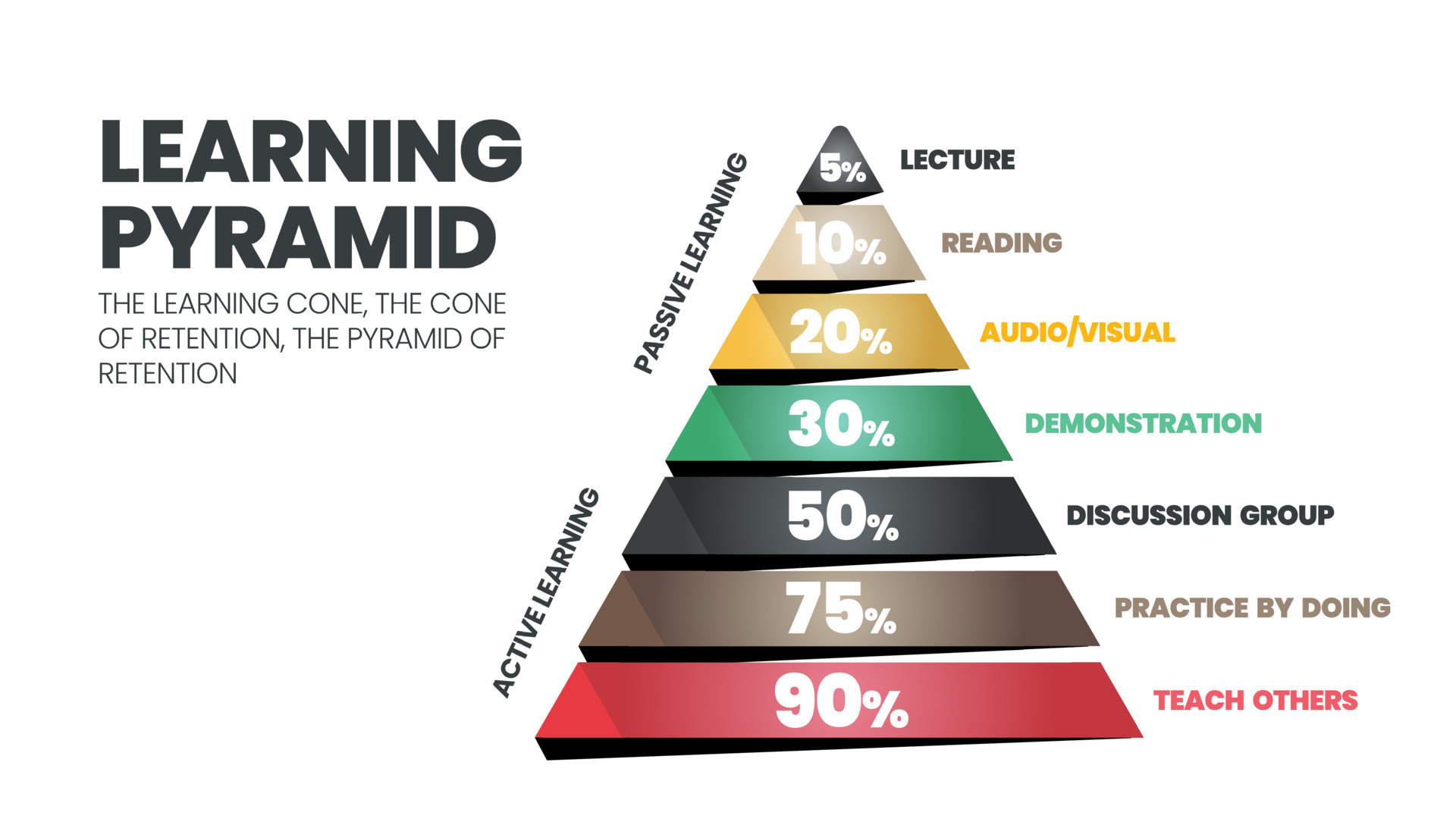
Have you ever been exhausted from preparing for your presentation as well as wondered why your teachers always ask you to discuss in groups during the course? Well, the answer is placed directly in the Learning Pyramid below!
What is the Learning Pyramid?
The Learning Pyramid was first created by education specialist Edgar Dale in the 1940s with the original name “Cone of Experience”. It was later further developed and re-named “The Learning Pyramid” by National Training Laboratories Institute. Learning Pyramid is an illustration that identifies the seven methods of learning, and the effectiveness of each method in terms of knowledge retention.
How does the Learning Pyramid work?
The pyramid is split into two parts: passive and active. The passive learning method includes lectures, reading, audiovisual, and demonstration while the active learning method includes group discussion, practice by doing, and teaching others. Its proportion respectively spreads from 10,20,30,50 to 90 percent.
Although lecturing still plays an important role in training delivery, particularly in delivering a large amount of theory and for practical demonstration, it is a passive form of learning method where you sit back and listen to the information spoon-fed to you by your professor only taken 10 percent of your retention. It means that if you only come into the class and passively listen to the lecture without pre-reading the book at home, taking notes carefully, combining with audio-visual learning, or participating in class activities, you might be not successful in your study.
Obviously, the Learning Pyramid suggests that the more active the learning experience, the better the knowledge retention and ultimately the learning outcome. Group discussion is a form of cooperative learning that leads to 50 percent of retention of information and material studies and higher academic achievement. This method helps you to practice thinking logically, and increase engagement in your class. Moreover, practice by doing encourages you to put into practice-whereby promoting deeper understanding and moving information from short-term to long-term memory. Last but not least, the key to subject mastery is teaching it to others which is represented as 90% of your retention. The most common form of teaching others is presentation and the best place to teach each other is in a study group. Therefore, one of the main activities in academic courses is peer-to-peer teaching, where a group of students takes turns teaching the other groups based on the course materials.
How should we apply the Learning Pyramid?
It is clear that most students soon forget what they only passively heard from their teacher but retain up to 90% if they have a chance to be active in learning. However, the Learning Pyramid does not suggest that we rule out “passive” learning methods altogether. It shows that varying your study method and materials will improve your retention and recall of information. And don’t forget to combine it with your unique learning style that yields the best result for you.
By Chau Thi Hong Tham


